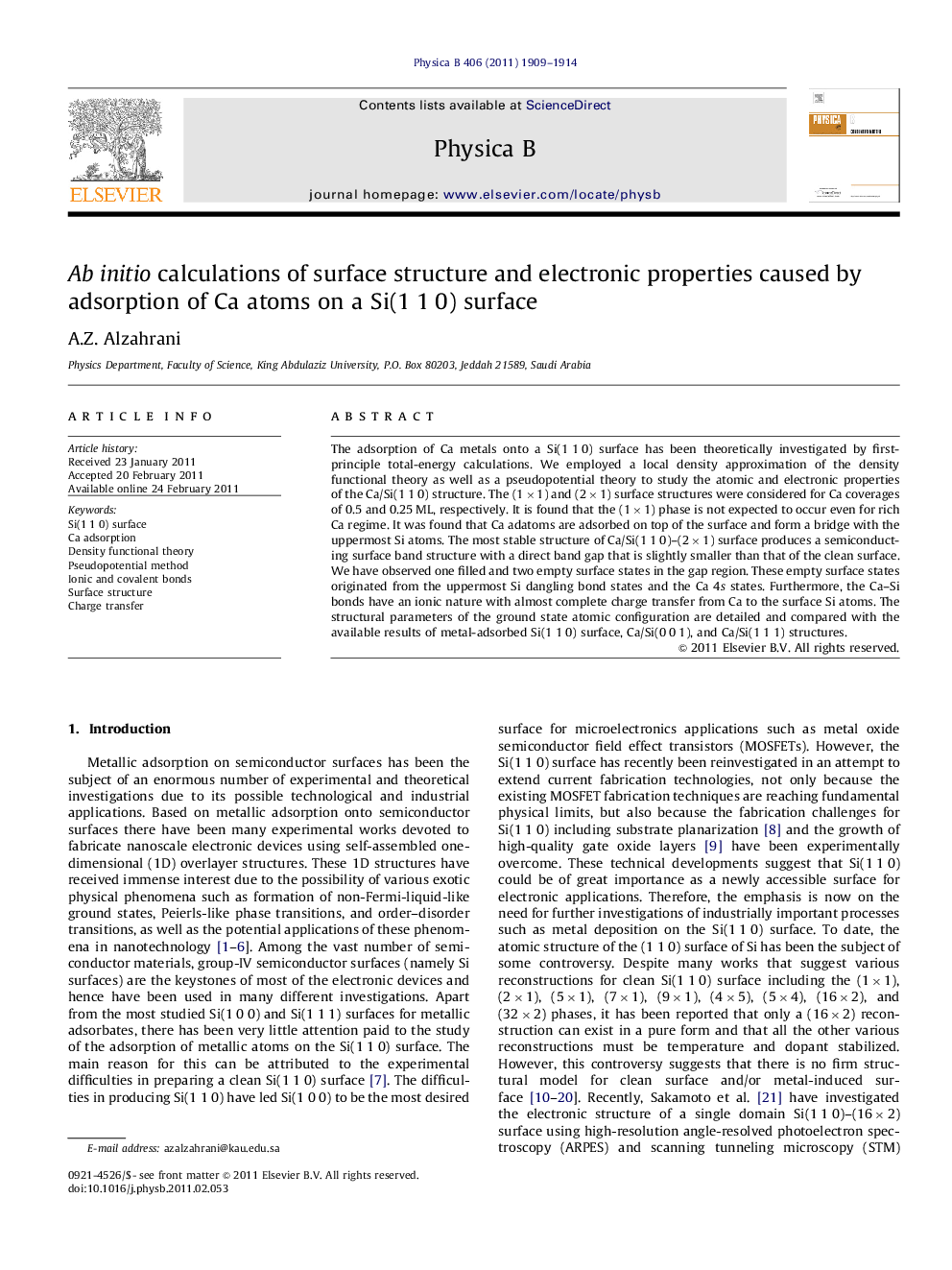| Article ID | Journal | Published Year | Pages | File Type |
|---|---|---|---|---|
| 1811727 | Physica B: Condensed Matter | 2011 | 6 Pages |
Abstract
The adsorption of Ca metals onto a Si(1Â 1Â 0) surface has been theoretically investigated by first-principle total-energy calculations. We employed a local density approximation of the density functional theory as well as a pseudopotential theory to study the atomic and electronic properties of the Ca/Si(1Â 1Â 0) structure. The (1Ã1) and (2Ã1) surface structures were considered for Ca coverages of 0.5 and 0.25Â ML, respectively. It is found that the (1Ã1) phase is not expected to occur even for rich Ca regime. It was found that Ca adatoms are adsorbed on top of the surface and form a bridge with the uppermost Si atoms. The most stable structure of Ca/Si(1Â 1Â 0)-(2Ã1) surface produces a semiconducting surface band structure with a direct band gap that is slightly smaller than that of the clean surface. We have observed one filled and two empty surface states in the gap region. These empty surface states originated from the uppermost Si dangling bond states and the Ca 4s states. Furthermore, the Ca-Si bonds have an ionic nature with almost complete charge transfer from Ca to the surface Si atoms. The structural parameters of the ground state atomic configuration are detailed and compared with the available results of metal-adsorbed Si(1Â 1Â 0) surface, Ca/Si(0Â 0Â 1), and Ca/Si(1Â 1Â 1) structures.
Related Topics
Physical Sciences and Engineering
Physics and Astronomy
Condensed Matter Physics
Authors
A.Z. Alzahrani,
